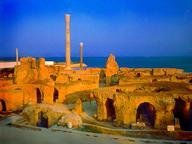Quiz Answer Key and Fun Facts
1. Which of the following ancient peoples founded the city of Carthage?
2. The city-state of Tyre had dominion over Carthage until approximately 650 BC, when the Carthaginians gained their independence. Until then, the Carthaginians were expected to provide which of the following for Tyre?
3. Although the Carthaginians expanded their empire to other areas, which of the following best describes the region they dominated?
4. By 509 BC which of the following islands in the Mediterranean were controlled by Carthage?
5. The ancient Carthaginians had what is called an oligarchal republic as their form of government. Two heads of state were elected every year from the wealthiest families of the city. What were these two leaders called?
6. The military of Carthage contained several different divisions, including the light cavalry. Which of their neighbors, who the historian Livy said were "by far the best horsemen in Africa", were members of this group?
7. Rome and Carthage fought a series of wars called the Punic Wars. What gave the Punic Wars its name?
8. The ancient Carthaginians were quite skilled at farming.
9. The economy of Carthage was much the same as Tyre's before the Carthaginians won their independence. Although no evidence of the manufacturing of this commodity has been found in the ruins of Carthage, there were cities nearby that manufactured which commodity that was known as Tyrian purple?
10. Aspects of Carthaginian religion, such as the worship of Ba'al and the sacrifice of children, are much discussed among historians today. Which goddess, however, was the patron of Carthage and the consort of Ba'al?
Source: Author
ponycargirl
This quiz was reviewed by FunTrivia editor
bloomsby before going online.
Any errors found in FunTrivia content are routinely corrected through our feedback system.
